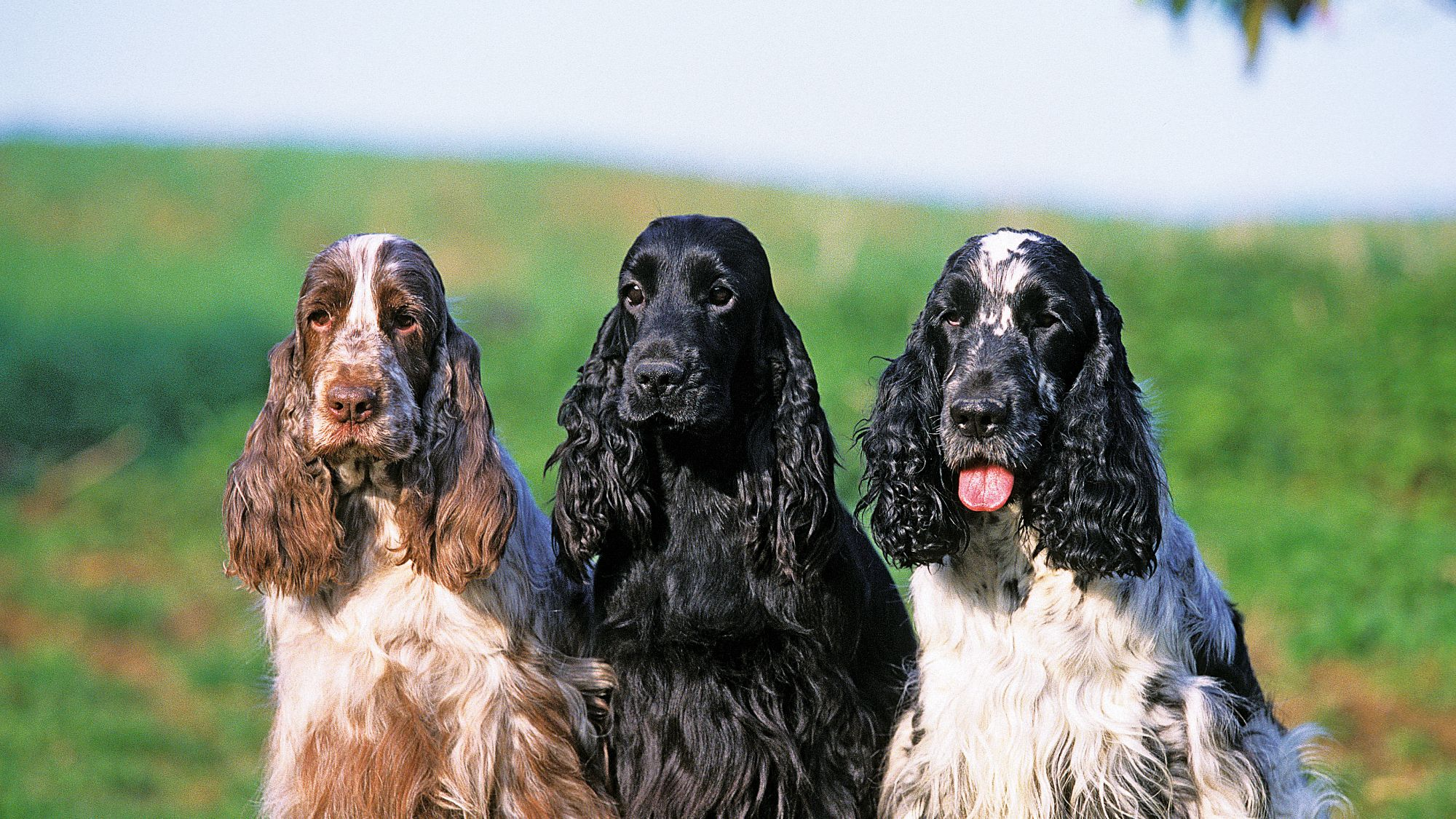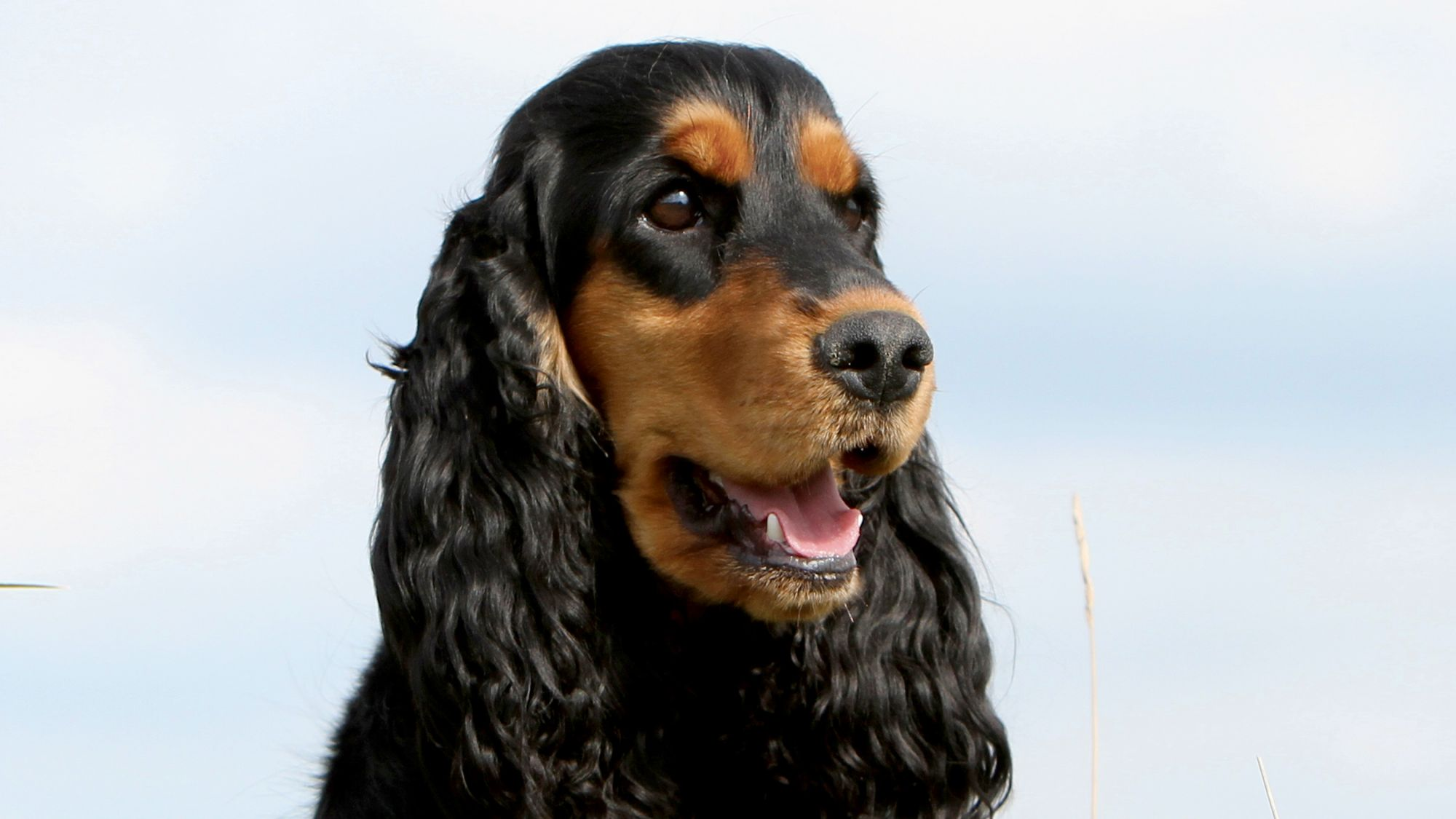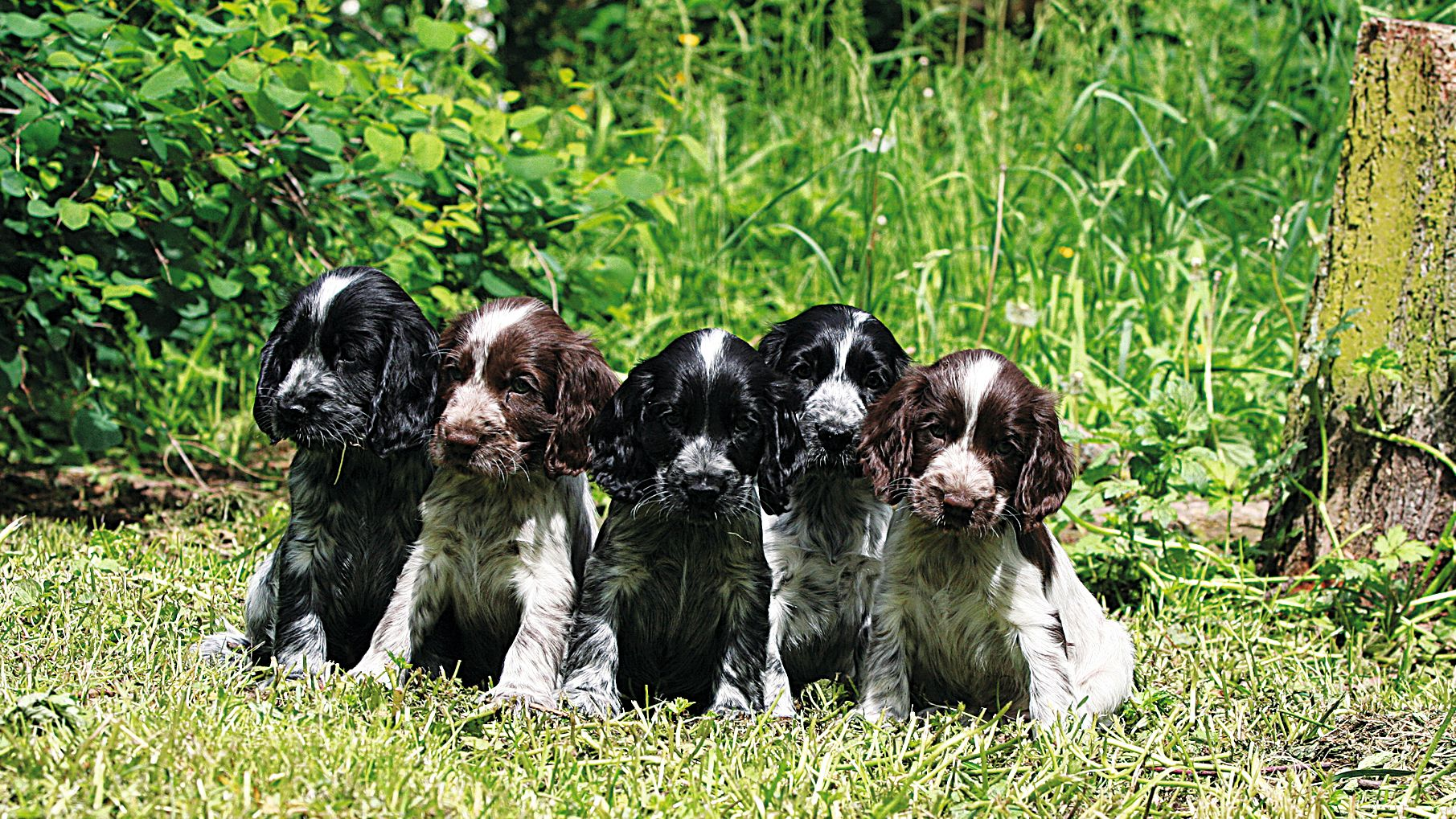Let's talk English Cocker Spaniel
Official name: English Cocker Spaniel
Other names: Cocker Spaniel, English Cocker, Cocker, EC
Origins: Spain
Drooling tendencies
2 out of 5Grooming needs
5 out of 5Shedding Level
3 out of 5Barking tendencies
3 out of 5Energy level
5 out of 5Compatibility with other pets
4 out of 5Warm weather?
3 out of 5Cold weather?
3 out of 5Suited to apartment living
4 out of 5Can stay alone
2 out of 5Family pet
4 out of 5
| Male | Female |
|---|---|
| Height | Height |
| 39 - 41 cm | 38 - 39 cm |
| Weight | Weight |
| 13 - 14.5 kg | 13 - 14.5 kg |
| Life Stage | |
|---|---|
| Puppy | Adult |
| 2 to 12 months | 1 to 7 years |
| Mature | Senior |
| 7 to 10 years | From 10 years |
| Baby | |
| Birth to 2 months | |
Drooling tendencies
2 out of 5Grooming needs
5 out of 5Shedding Level
3 out of 5Barking tendencies
3 out of 5Energy level
5 out of 5Compatibility with other pets
4 out of 5Warm weather?
3 out of 5Cold weather?
3 out of 5Suited to apartment living
4 out of 5Can stay alone
2 out of 5Family pet
4 out of 5
| Male | Female |
|---|---|
| Height | Height |
| 39 - 41 cm | 38 - 39 cm |
| Weight | Weight |
| 13 - 14.5 kg | 13 - 14.5 kg |
| Life Stage | |
|---|---|
| Puppy | Adult |
| 2 to 12 months | 1 to 7 years |
| Mature | Senior |
| 7 to 10 years | From 10 years |
| Baby | |
| Birth to 2 months | |
Tailored nutrition for your English Cocker Spaniel

Get to know the English Cocker Spaniel
All you need to know about the breed
Don’t let the posh coat fool you: The English Cocker Spaniel is as rugged as they are captivating, suited to the great outdoors having been bred as a hunting dog. An ever-faithful companion, they’re always eager for a long walk, or even a hike, no matter the weather. The main attraction, besides the chance to stomp around in nature? You. Whether out and about or cosied up by the fire, the breed is never not content to be around his humans. They are devoted by nature.
Using gentle yet firm training from a young age will help entrust your English Cocker Spaniel. The breed can have a mind of its own and with hunting as its instinct, they can sometimes be undecided about coming when called. The English Cocker Spaniel bark can be an issue--as it can be for any hunting breed—but here, too, training can help.
The English Cocker Spaniel earned its reputation as an expert retriever of game birds, thus known as a bird dog or a gun dog. The smallest of the Sporting Group, their instinctual drive to find and retrieve could translate to picking up objects on the homefront and carrying to another spot. Try a healthy game of fetch if your dog seems restless. Steadiness is the breed hallmark, and their stable bodies will glide through the field--or the yard--with the greatest of ease.

2 facts about English Cocker Spaniels
1. Those silky ears are prone to infection
As with many long-eared breeds, keeping the canals free and clear is a must. Clean them at home and have them thoroughly checked at your veterinarian’s office so your English Cocker Spaniel is well-groomed.
2. Taking its name
The English Cocker Spaniel derives its name from the woodcock bird, which he is known to be expert at catching.
History of the breed
The English Cocker Spaniel emanated from a sporting past. Developed as a bird dog or gun dog, the breed was used widely throughout England and Europe to retrieve small birds, particularly woodcock from which the breed derives their name. A utility dog, English Cocker Spaniels are thought to be the oldest.
The breed can trace its origins back to Spain, the word “Spaniel” actually meaning “Spanish dog.” English Cocker Spaniels gained tremendous popularity throughout Europe over the ages for their acumen as sporting dogs and with birds before the invention of the rifle. Spaniels are classified as either water Spaniels or land Spaniels, specialized in the intricacies of hunting in either milieu, with the English being the smallest of the land variety. The dogs went on to flourish in England in the 19th Century when showing was in full swing and breed standards started to be established. For both their temperament and personality, the English Cocker Spaniel soon stood out from the pack of various Spaniels.
The breed then diverged on the breeding track from their American cousin as the 20th Century took hold, with both established as official breeds by the American Kennel Club in 1946. The English distinguishes itself with a longer head and nose and shorter-haired coat.
The breed gained tremendous popularity as well with the 1955 Disney movie Lady and the Tramp, with Lady portrayed as an elegant and warm Cocker Spaniel.
From head to tail
Physical characteristics of English Cocker Spaniels
1.Ears
2.Head
3.Body
4.Tail
5.Coat

Things to look out for
From specific breed traits to a general health overview, here are some interesting facts about your English Cocker Spaniel
Reign in the independent streak
Often described as merry, the English Cocker Spaniel’s admirable traits are numerous. Their wilful nature is one of them. Until they get distracted and head off in the opposite direction. Early training will help teach them who the alpha is, and is not.
Sometimes difficult to housetrain
As a breed that’s obstinate and used to sport, issues can arise when it comes to training the English Cocker Spaniel. A crate can be a great aid in reinforcing good, and discouraging bad, behaviour.
Underneath that soft exterior lurks the body of a champion athlete
As domesticated as they are, the breed is also a sporting one. Exercise for the English Cocker Spaniel then, is essential. They enjoy hikes in the great outdoors and will never turn their noses up at playtime in the yard.

Caring for your English Cocker Spaniel
Grooming, training, and exercise tips
English Cocker Spaniels enjoy exercise, including runs and long walks, and should get some in every day. As a hunting breed, they are used to being outdoors. Romps in the yard with the family (the English Cocker Spaniel is kid-friendly!) work as well since the breed enjoys playtime tremendously.
The English Cocker Spaniel’s coat is their most distinguishing attribute. Glossy and fine, the breed’s short, tight, wavy hair has made it the highlight of dog shows for decades, and garnered it the top prize many times over. Brushing and combing once a week will keep it in top form. Groom your Cocker Spaniel with a professional for hard-to-get-right areas around the face and feet, and under the neck, ears and tail where hair can be longer. Your dog will thank you for it.
As with many purebred dogs whose traits are intact, training should come early. Highly sensitive dogs, training English Cocker Spaniels with a patient, gentle hand is best. Consistency is key, harshness is not. Their softness extends to the inside as well as the outside.
English Cocker Spaniels enjoy exercise, including runs and long walks, and should get some in every day. As a hunting breed, they are used to being outdoors. Romps in the yard with the family (the English Cocker Spaniel is kid-friendly!) work as well since the breed enjoys playtime tremendously.
The English Cocker Spaniel’s coat is their most distinguishing attribute. Glossy and fine, the breed’s short, tight, wavy hair has made it the highlight of dog shows for decades, and garnered it the top prize many times over. Brushing and combing once a week will keep it in top form. Groom your Cocker Spaniel with a professional for hard-to-get-right areas around the face and feet, and under the neck, ears and tail where hair can be longer. Your dog will thank you for it.
As with many purebred dogs whose traits are intact, training should come early. Highly sensitive dogs, training English Cocker Spaniels with a patient, gentle hand is best. Consistency is key, harshness is not. Their softness extends to the inside as well as the outside.
7/7
All about English Cocker Spaniels
The breed is one that’s known to bark, especially if left indoors. This is an active dog that benefits from getting outside. Using their voice is a Cocker Spaniel trait and may merely be their asking to be heard. The very sensitive breed craves the company of their family and will thrive most with owners who are present a lot of the time.
Read more on this topic
Sources
- Veterinary Centres of America https://vcahospitals.com/
- Royal Canin Dog Encyclopaedia. Ed 2010 and 2020
- Banfield Pet Hospital https://www.banfield.com/
- Royal Canin BHN Product Book
- American Kennel Club https://www.akc.org/
Like & share this page